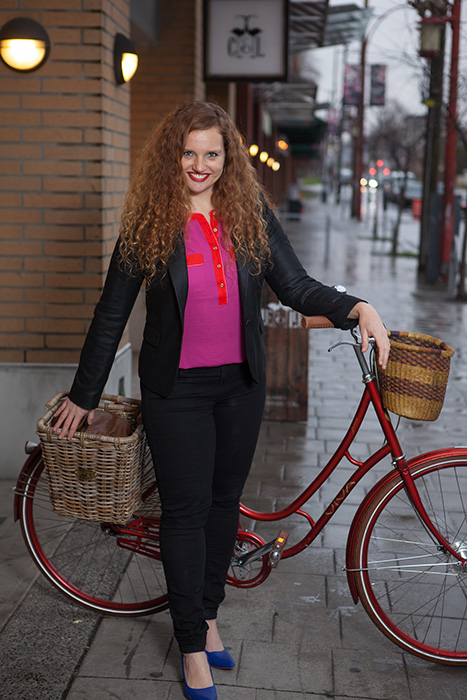Autumn Gear Guide
Find inspiration in our Gear Guide that will keep you out on your bike through wind or rain.
Download NowWe want to say thank you to everyone who continues to join us on this incredible ride.

Photo by David Niddrie
Anniversaries are a great opportunity to reflect on our past. On this tenth anniversary of our small, independent media company – built around promoting, encouraging, and inspiring an urban cycling lifestyle – we want to look back, say thank you to everyone who has joined us on this incredible ride, and reflect on how far we have come.
Ten years ago today there was no massive political support for bicycling infrastructure in North America and there were no modern bike share systems. The first large-scale system in North America launched in Montreal, Quebec, in 2009 followed by Denver, CO, in 2010.
While Montreal had been quietly building cycle tracks (now known as protected bike lanes) since the 1980s, it was the only city in the US and Canada to do so. Prior to 2005 a few college towns had protected bike lanes, but it wasn’t until 2007 that New York City introduced the first protected bike lane built in a major US city. Since then, the number of protected lanes has nearly quadrupled and continues to grow.
We have also seen a complete transformation to the bicycles and accessories available for people riding for utility and transportation. Ten years ago, North American bicycles designed specifically for the urban rider were nearly non-existent. Urban cycling was almost exclusively limited to fixie riding bicycle messengers. Hybrid bicycles (an awkward mix between a road bike and a mountain bike) were abundant and not quite suited to daily use, though a few European city bikes had found their way here. Ten years ago, most people in North America thought of cycling as merely a sport for white, middle-age men in Spandex.
There was no Green Lane Project, NACTO, or Cycle Chic movement. Yet some people were riding bicycles for their daily needs, and thus Momentum Mag was born.
Ten years have passed and while the movement has grown substantially it feels like we have only touched the surface of possibilities. Today, we know that 42 percent of people who rode a bike in 2014 were women and the same percentage were people of color.
Over the next 10 years, I believe we are going to see the continued expansion of public bike share systems in North America. Ones that extend beyond the downtown core to provide equitable access to underserved communities.
I believe we will see the continued rise of the Open Streets movement. I believe we will see many more people riding bikes in our cities and towns, dressed for their destination and not their journey. These people will increasingly travel on protected bike lanes allowing for safe, convenient, and connected access to where they want to go. And because of all this, we will see a rise in the number of livable, healthy, and happy cities for all.
Is this just wishful thinking or, as I hope, a glimpse into a better future for bicycles and all of us? What do you think the next 10 years will bring? Write me and let me know!
mia @ momentummag.com | @miakohout

Momentum Mag turns 10!
Our anniversary issue brings you our 5th Annual Gear Guide and much more.
Inside Momentum Mag May/ June 2015 we explore how cycling jeans are adding innovation to this long-standing fashion staple, we delve into the environmental impact of bicycle manufacturing, and we check out the cycling scene in Seoul, South Korea. We also check out the active living revolution taking place in Brownsville, TX.
Plus: Cyclepreneurs, Kidical Mass, yoga for city riders, Portland city guide, and much more!
Find inspiration in our Gear Guide that will keep you out on your bike through wind or rain.
Download Now
Many happy returns, Momentum and Mia: you’ve done a splendid job over the past decade. You have been instrumental in exorcising the great hereditary curse of cycling in the English-speaking world since the late 1960s: the way in which it was taken over by recreational “Real Cyclists” drawing their inspiration from the USA (where cycling was never anything but recreational …), who then proceeded to foist their agenda onto everyone else, demanding that all other cyclists dress like themselves, ride the same sort of bikes as themselves and ride them in the same manner as themselves, jostling with fast and heavy motor traffic on terms of entirely imaginary equality. To a frightening degree they were also successful in persuading transport planners that their own sort of cycling was what it was all about – music to their ears since it seemed to require no effort or investment on their part – and likewise the general public, who came to associate the word “cyclist” with a cantankerous road-warrior in a Spandex body-stocking and a foolish-looking plastic hat. Small wonder that in the USA, Britain and Australia the taxpaying public are now deeply reluctant to shell out for decent European-standard cycling infrastructure: to them it looks as though they’re being asked to fund a slightly crankish minority hobby rather than a basic public amenity, which is how cycling infrastructure is regarded in continental Europe.
Anyway, the tide has turned during the past five years or so, and there seems to be general agreement among cyclists on both sides of the Atlantic that transport cycling on segregated tracks is the way forward: normal clothes on boring bicycles, but at the same time safe, convenient and accessible to everyone between the ages of eight and eighty.
You have played your part in causing this shift of opinion, on which I congratulate you. And I hope that Momentum will be around for many years to come.
Comments are closed.